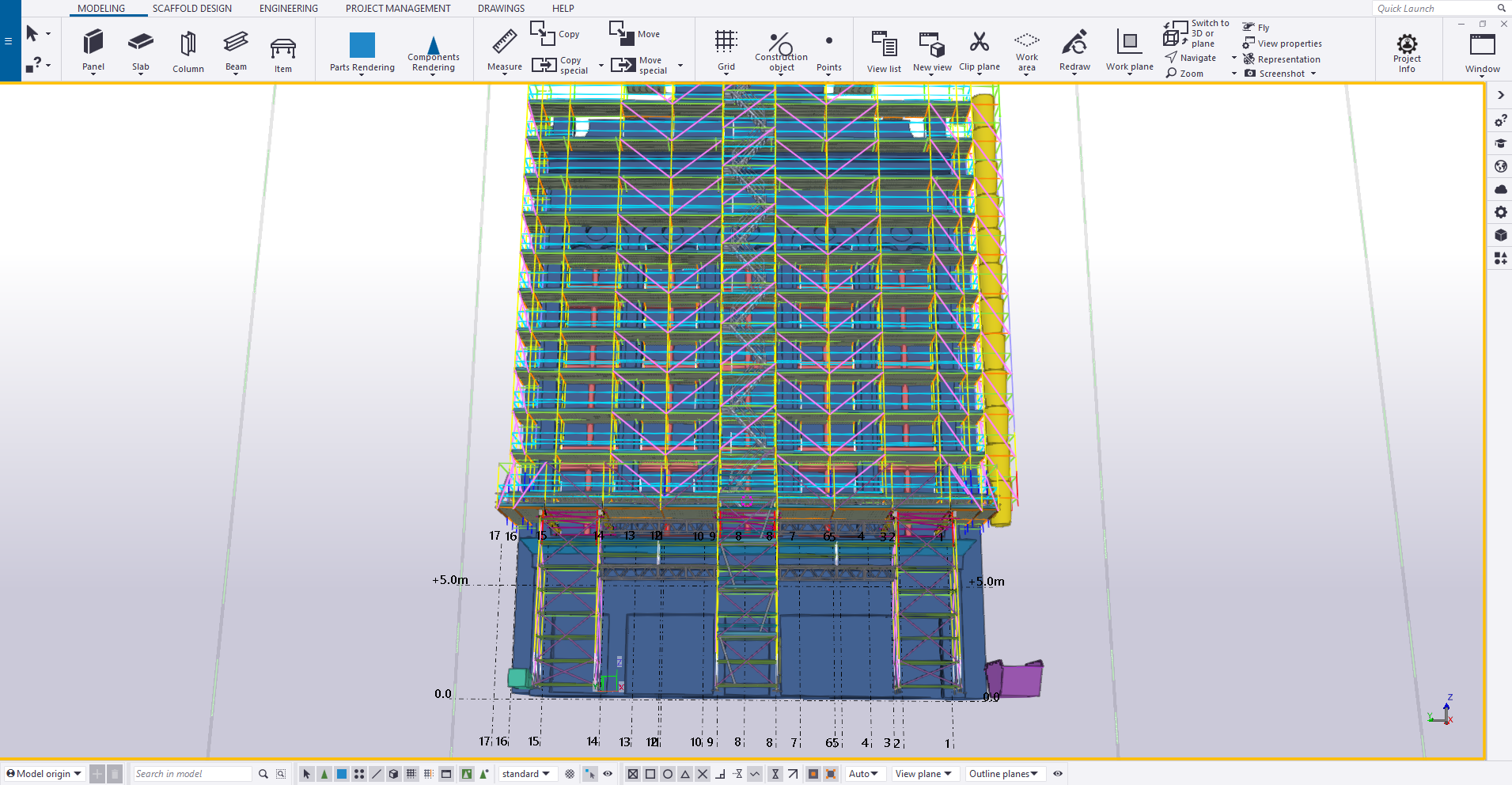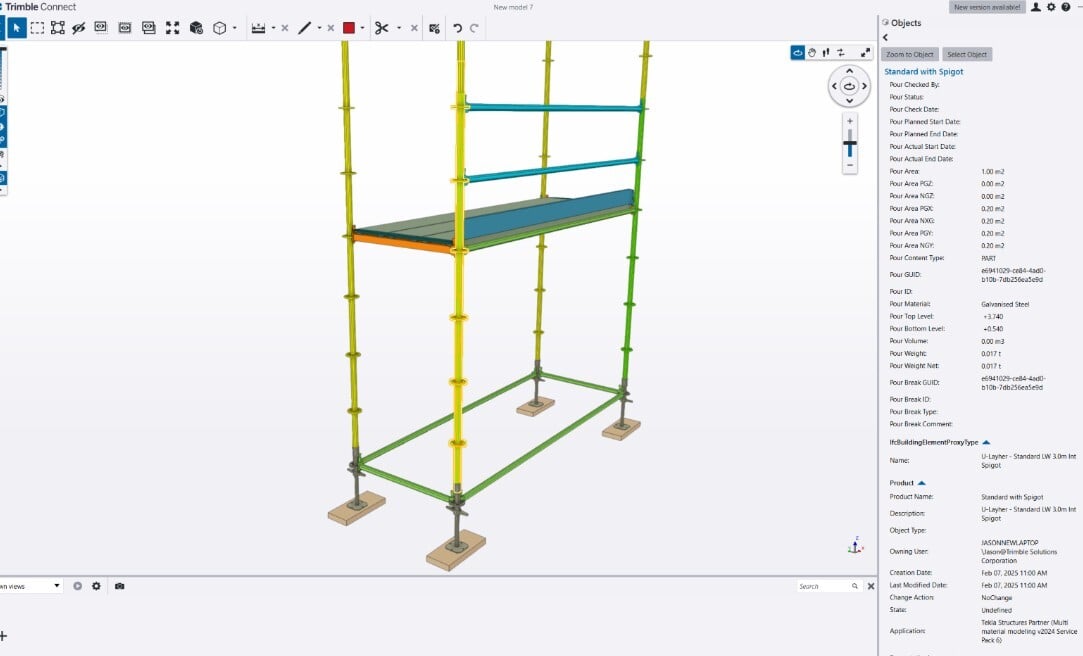Why Scaffolding Needs a Digital Twin
27 February 2023 | 3 minute read
The rapid digitalisation and adoption of 3D software in the construction industry over the last decade has resulted in growing pressure for scaffolding projects to follow suit.
Despite temporary works playing a key role in modern construction and maintenance, scaffolders can’t seem to move away from 2D drawings. What’s more surprising is hearing from companies who model in 3D but still print out the 2D version. WHY?
When something goes wrong in your business, it seems easy to lay blame - but have you ever thought that - in fact, it was likely attributed to how your plans were put together?
Paper-based drawings have long been used for design and communication between clients, engineers and the onsite team, without actually considering the real cost to your business or the ramifications.
The Cost of Working in 2D for Scaffolding:
- Restricts access to visualise critical areas onsite;
- Reduces ability to clash check, develop accurate estimates & gear lists; and
- Limits the ability to manage or share data easily between teams.
The Difference Between 2D & 3D in Scaffolding
3D models are the future of safety and efficiency because they contain precise data associated with your gear and site, ready to be shared and interpreted.
Once converted to 2D the detail becomes lost, and suddenly your accuracy is left hanging by a thread.
Just think, if a build interpretation from a PDF isn't an exact replica of your 3D plan; your engineering is jeopardised, your available gear is incorrect, and you will probably have to pull it down and start again; causing significant delays.
Now by the time the section goes wrong, it's hard to attribute fault because the 2D plan did not reflect the detail that exists in the 3D version.
BIM Becoming Standard in Construction & Maintenance Globally
Modern intelligent 3D CAD design offers solutions to improve workflows and bridge the gap between different processes and improve construction outcomes.
Due to the wide and rapid adoption of Building Information Modelling (BIM) around the globe, companies are naturally adopting a process that is free of 2D drawings, and are ‘wowing’ the world in the process.
As an example, Norway’s Randselva Bridge – the world’s longest bridge has been designed and constructed with almost no traditional paper drawings.
Take a minute after this and check it out.
How to get a 3D Model for your Scaffolding Project
There are few modelling packages available for scaffolders that accurately capture the modern requirements of BIM. Unless businesses have developed a custom solution for their own scaffolding, many companies are still working the same way.
Now you might be thinking that you don’t often get any 3D models from a client, but nowadays there is always a 3D model that exists somewhere, scaffolders need to start asking for that and not accept the highlighted printout.
.png?width=1920&height=1027&name=MicrosoftTeams-image%20(15).png)
The Benefits of 3D Modelling for Scaffolders
Those who have already adopted the right scaffolding software understand how huge the time and money savings are. These are a few reasons why it’s taking our industry by storm:
Scaffolders designers can now:
- Easily work with almost any client file and model with the exact digital twins of their scaffolding gear; inbuilt with the full manufacturer's data specs.
- Generate totally accurate reports, gear lists and estimates for tendering and makes it simple for engineers to sign off on work.
- Verify critical dimensions, clash detect against other reference models and use point cloud data to ensure the scaffold goes into the exact place according to the onsite conditions.
The Benefits of 3D Modelling for the Wider Project Team
Companies are experiencing huge time savings with instant sharing between teams and communication on live models. There is next to no paper trail and everyone is working from the most up-to-date 3D plans.
Realistic offsite simulation and data referencing allows construction teams, and trades to have total clarity on specifications and erection requirements. Identifying hazards in advance and improving safety outcomes.
Changing the Scaffolding Industry for the Greater Good
Although solutions to developing a 3D scaffolding model exist, an embedded industry legacy has normalised downgrading 3D to 2D drawings for the communication and erection stages of the project.
It seems backwards when the detailed data in 3D models is available, ready for sharing, but gets lost when translated into 2D.
In essence, there is no doubt that a 2D drawing based approach will eventually be phased out, but to make that happen we need to continue to work to change the status quo.
We are already seeing scaffolders at the forefront of this technology providing unparalleled success through their design and execution accuracy — helping create a safe and efficient work environment for the wider industry.
The sky's the limit with 3D scaffold design; it's time to get ahead or get left behind.
For more information on ScaffPlan contact us or email info@scaffplan.com.

